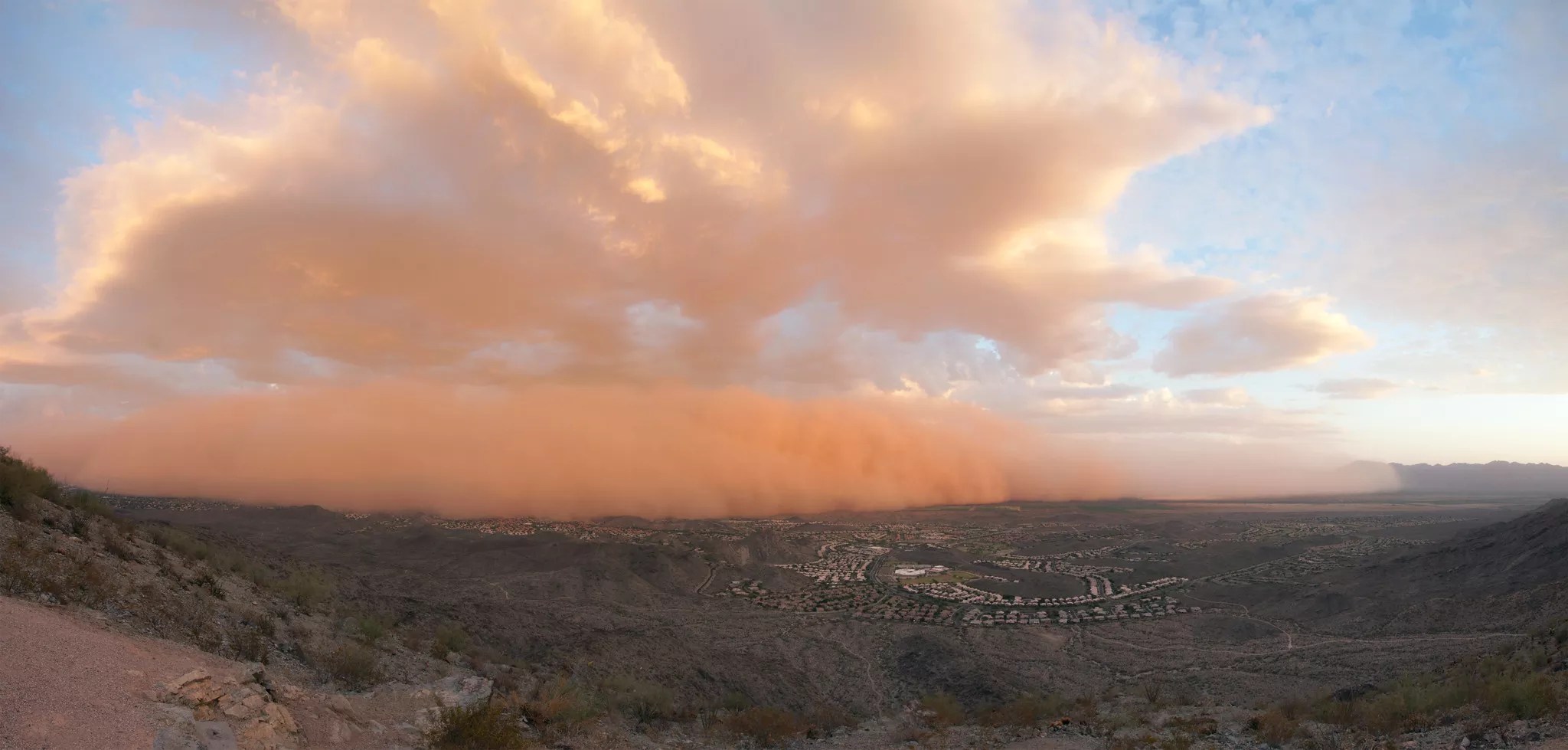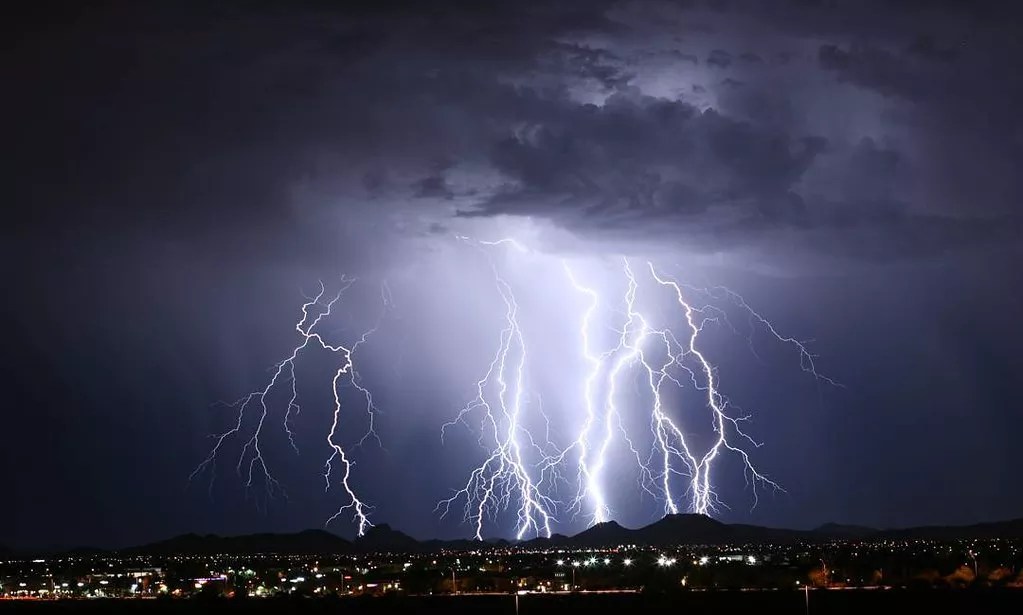
Alan Stark / Creative Commons

Audio By Carbonatix
If you’ve lived in Arizona during monsoon season, you can smell it. As rainstorms descend on the Valley, kicking up dirt and forming haboobs – those are dust storms, for any newbies – a distinctive scent fills the air.
That smell is courtesy of the creosote plant, a desert bush that emits a particular fragrance in the rain. When you catch a whiff, it means one thing: A storm’s coming.
Welcome to monsoon season.
When is monsoon season in Arizona?
Every summer, it arrives. Officially, the National Weather Service defines Arizona’s monsoon season as the period between June 15 and Sept. 30. More broadly, monsoon season spans the hottest months of the Arizona summer, during which time the Phoenix area receives roughly half of its yearly rain. The season’s frequent storms also take the edge off the glaring summer heat, making the persistent haboob-alert texts everyone in the state receives almost worth it.
The actual start of monsoon season varies each year according to weather conditions within the state and beyond. Whether you’re waiting for that first waft of creosote, or whether rain is beating down on your roof – and especially if you’re confronting a haboob for the first time – here’s what you should know about monsoon season in Arizona.

A 2016 thunderstorm in the Valley.
Abbee Day/Flickr/CC BY-NC-ND 2.0
What is a monsoon?
A monsoon is not an individual storm. The word comes from the Arabic “mausim,“ which means “season.” So yes, by saying “monsoon season,” we’re all being a bit redundant.
We get the term from Arabic because of the centuries-old weather patterns that historically have brought torrential rain to the Arabian Peninsula and the Indian subcontinent. In Arizona, a monsoon occurs when winds shift from generally eastward, coming from California and Nevada, to a southerly direction. As a result, moisture is pushed northward from Mexico.
It all results in frequent thunderstorms dropping loads of rain over the state. Tucson and southern Arizona get most of it – roughly two-thirds of their yearly rainfall – while the central and northern parts of the state fill up their figurative tanks halfway.
Because the rainfall sometimes comes down faster than the ground can absorb it, the storms can cause flooding. And while the rain Arizona receives during monsoon season does not affect the state’s water supply, it is important for vegetation growth. The precipitation also helps limit the severity of fire season, when hot and dry conditions make wildfires more likely across the state.
Oh, and about those haboobs. Their name also comes from Arabic – specifically “habb,” which means “wind.” Haboobs are lens-shaped walls of dust that thunderstorms kick up ahead of their paths. They can reach 3,000 feet in height and speeds of 30 miles per hour. So, stay inside and don’t try driving in one.
What year was Arizona’s wettest monsoon season?
Well, it sure wasn’t last year.
You may recall that Phoenix nearly set a record with a 159-day streak without measurable rain, bridging 2024 and 2025. Much of that fell outside of monsoon season, but we had a weak monsoon as well. Phoenix got only 0.74 inches of monsoon rain last year, the ninth-driest monsoon in Phoenix history. (Records go back to 1895.)
The driest came a year earlier, in 2023. Phoenix received only 0.15 inches of rain that year, according to the NWS, compared with an average monsoon rainfall of 2.43 inches from 1991-2020. The previous record holder was the 1924 monsoon season, during which Phoenix received more than double the amount of rain the city received last summer.
The wettest on record occurred in 1984. That year’s monsoon brought more than 9.5 inches of rain.

National Weather Service
What’s the 2025 monsoon season forecast?
We might actually get a good monsoon this year. The NWS forecasts a wetter-than-usual monsoon in 2025.
The current NWS forecast for July to September shows that Phoenix has a 40% chance of a wetter-than-normal summer and a 27% chance of summer being drier than usual.
“The odds are tilted toward this summer being warmer and wetter than normal in the Phoenix metropolitan area,” Mark O’Malley, a meteorologist with the National Weather Service, told Phoenix New Times in May.
And given the last few years, a rainy monsoon season can’t get here monsoon enough.